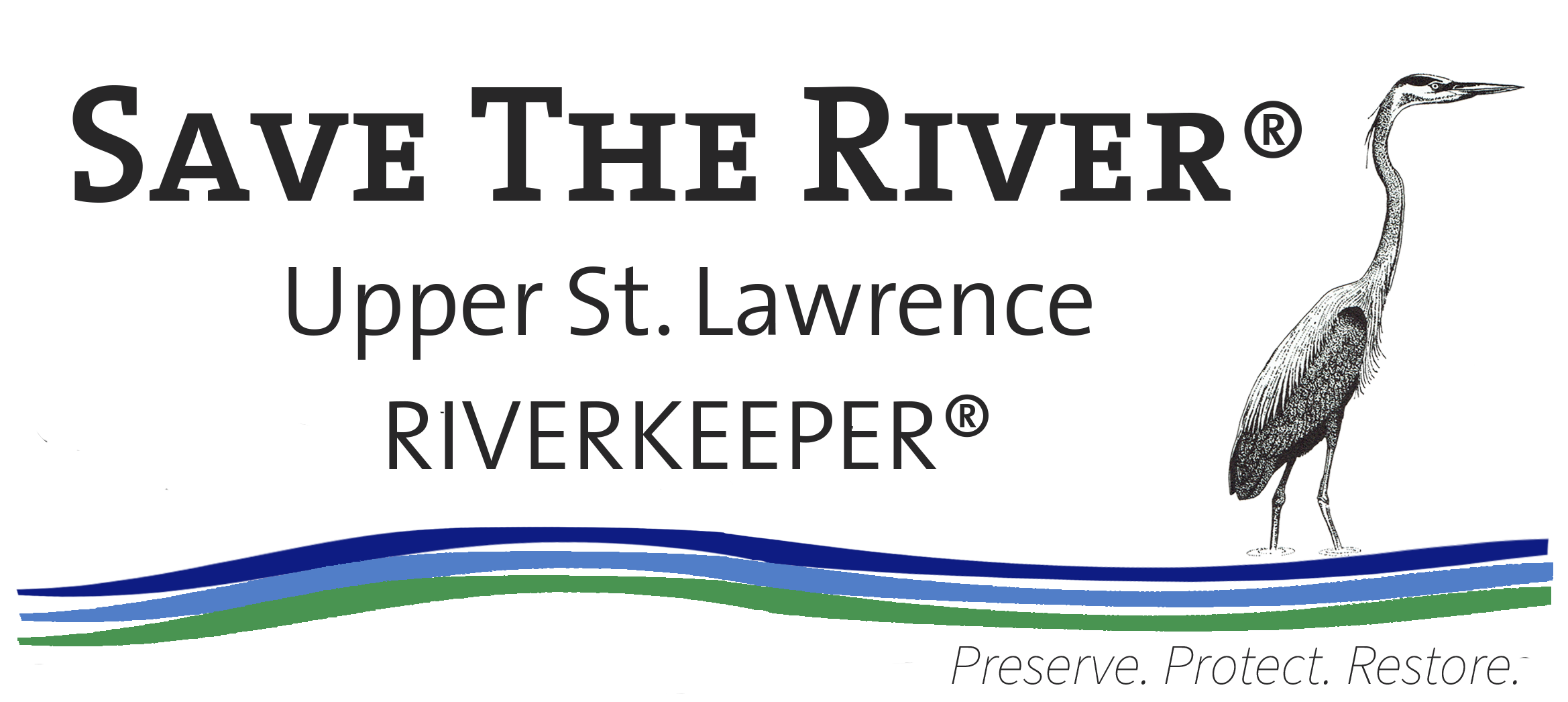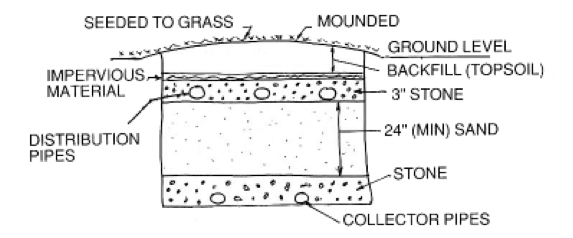A sand filter is considered an alternative secondary treatment system requiring authorization by the New York State Department of Health and the New York State Department of Environmental Conservation.
A sand filter can be used when soil is “clayey” or otherwise impervious, or there is little depth of soil on site for effluent treatment. Sand grain size must be in the range 0.5 to 1.00 mm. Effluent from the filter layer must be collected and disposed of; New York State prohibits the discharge of sand-filtered effluent to the ground surface and also prohibits the discharge of sand-filtered effluent to surface water from new construction. New York State Department of Environmental Conservation may allow the discharge from an existing residence to surface waters providing it is a hardship case. The homeowner would apply for a State Pollutant Discharge Elimination System (SPDES) permit and provide final construction plans to meet the appropriate limits of the SPDES permit. The applicant must first have attempted an alternative subsurface system constructed accord- ing to applicable criteria. Engineered plans would be required for any sand filter with a discharge to the ground surface or any body of water.
This system also requires layers of crushed stone, a layer of geotextile or other material to keep fine silt and particles from enter- ing the filter, and 6-12” topsoil. A SPDES permit from NYS DEC is required for any discharge directly into surface water.
Biofilter
A biofilter uses a substrate with high surface area to facilitate growth of microbiological communities that break down waste in effluent. A biofilter is also an alternative system, requiring special authorization by New York State Department of Health and Department of Environmental Conservation.

